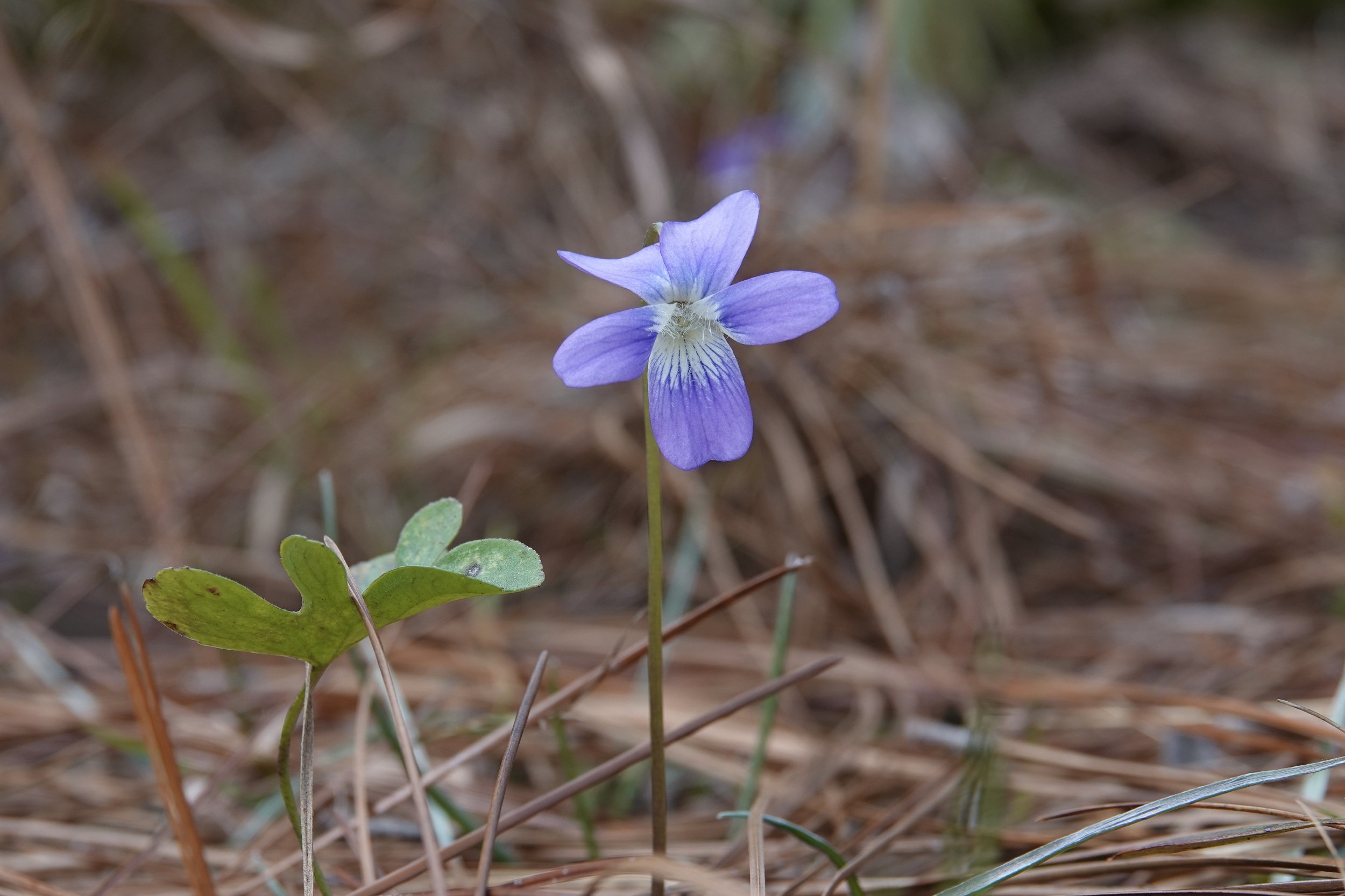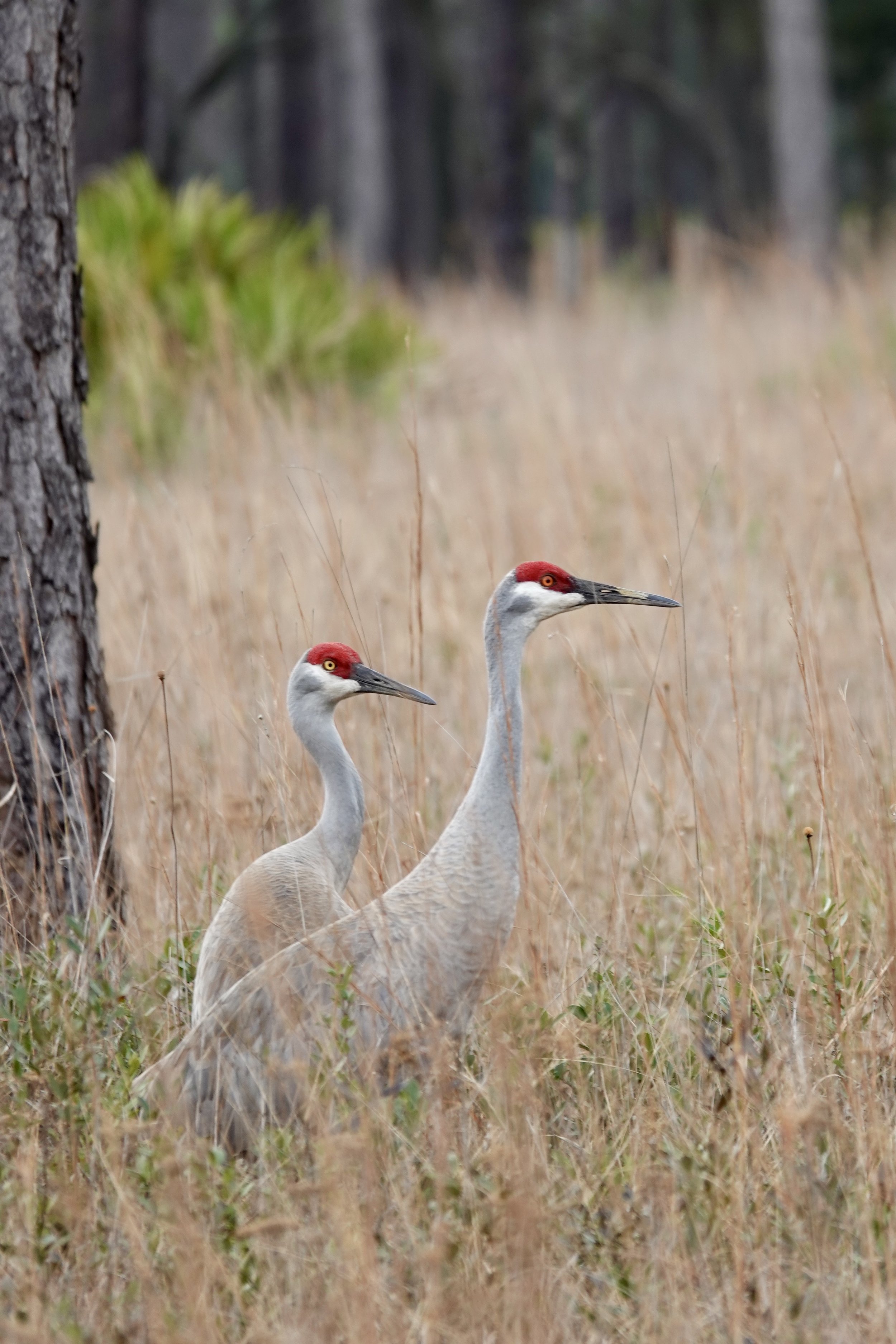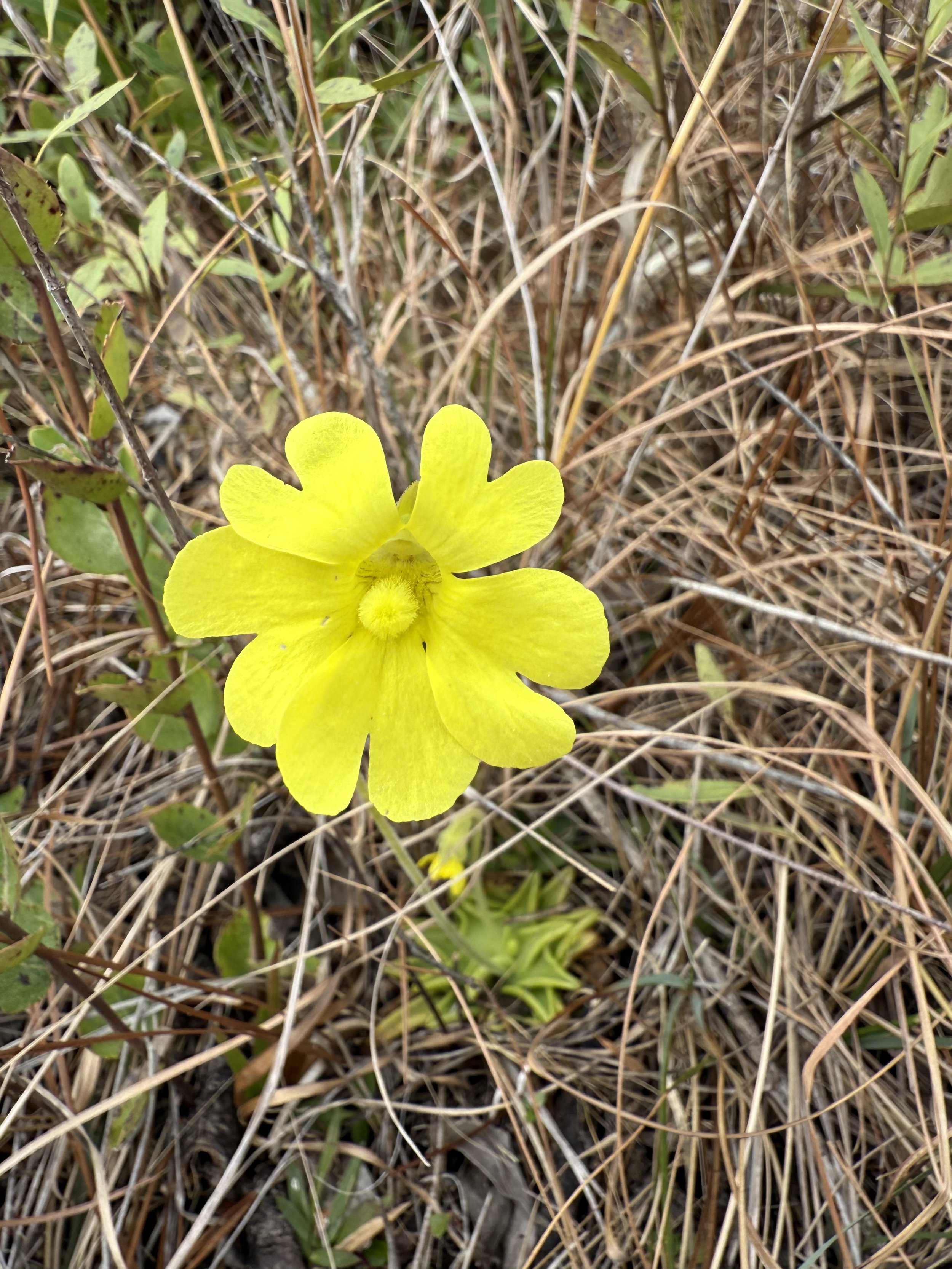Cranes and Lanes
I had no idea there was a sandhill crane subspecies officially classified as endangered.
Traveling and playing in the outdoors in the Southeast for a more than a month, and always game for a visit to a national wildlife refuge, I was inexorably drawn to the Mississippi Sandhill Crane National Wildlife Refuge in Gautier, Mississippi.
The Mississippi Sandhill crane, I learned, does not migrate, as many thousands do elsewhere to the west in North America. Not only does it not migrate, it insists upon a specific habitat called wet pine savanna - mostly flat land, with scattered pine and hardwoods, shrubs, wildflowers, and tall grass.
It makes for a beautiful landscape, especially, I think, the near perfect specimens of longleaf pine with rounded canopies displaying roundish tufts of needles.
The problem for this subspecies is that its habitat has all but disappeared in the Southeast - only some 5 percent of wet pine savanna remains of what once was an abundant landscape.
More than 50 years ago, when creation of Interstate 10 was planned, with yet more wet pine savanna about to be lost, the plight of the Mississippi cranes - only about 30 of them were left at the time - touched off a environmental battle that came to be known as “cranes versus lanes.” It led to creation of the refuge, which not only is dedicated to preserving the subspecies, but the habitat itself.
Today, with captive breeding and other measures, including the habitat protection, the number has risen to about 200. Which is still not very many, and troubling.
That I wanted to see these cranes and reached the refuge traveling on I-10 - which, of course, was built - is an irony not lost on me.
Aside from these Mississippi cranes, the species overall is found in much of North America. Migrating cranes breed as far as the extreme reaches of the Arctic tundra. They are a rarity in the Northeast, however, with perhaps a few birds showing up each year in my home turf in Connecticut.
Because their numbers are so few, a visit to the refuge is no guarantee you will actually see one. I stopped by one day for more than an hour and never saw one. The next day I spent a couple of hours and - right behind the refuge headquarters building - saw four of them, and got decent photos.
Close by the headquarters is a loop trail that offers a nice sense of this habitat, including views of Bayou Castille, a slow-moving stream that is a tributary to the much larger Pascagoula River. Bayou, incidentally, is not a French word, but Choctaw - meaning small stream, according to the invaluable “Home Ground: A guide to the American Landscape.”
I hiked the loop, which is just less than a mile long, several times over the two days. One of the distinguishing features of wet pine savanna is its biodiversity, with upwards of 30 plant species growing in a square meter of land.
I should have spent more time than I did, but a slow walk still impressed me with the plant life, everything from carnivorous plants to late winter violets and milkworts. Some impressive live oaks. The charming longleaf pines.
A late-winter violet in the Mississippi Sandhill Crane National Wildlife Refuge. In wet pine savanna habitat, biologically rich, there can be 30 species of plants in a square meter.
Mississippi Sandhill cranes, with distinctive red cap, in ideal wet pine savanna habitat in the Mississippi Sandhill Crane National Wildlife Refuge in Gautier, Mississippi. Mississippi Sandhill cranes are a rare subspecies of sandhill cranes and are legally classified as an endangered species.
Wet pine savanna habitat, once abundant in coastal Mississippi, is now scarce, but ideal for the Mississippi Sandhill crane subspecies, an endangered species. Bayou Castille can be seen in the center background.
Yellow butterwort, in Mississippi Sandhill Crane National Wildlife Refuge in Mississippi. This butterwort is a carnivorous plant that entraps insects on the sticky leaves at its base. It likes wet pine savanna habitat.


